Custom GPTs Explained: Tailoring AI for Unprecedented Results
Are you ready to move beyond generic AI and unlock truly transformative results? This guide unveils Custom GPTs – a groundbreaking evolution in artificial intelligence that empowers you to sculpt bespoke AI assistants precisely for your unique challenges, data, and workflows.
Discover how tailoring AI can lead to unprecedented levels of efficiency, innovation, and precision, turning a general intelligence into your most specialized and powerful digital partner.
Top Benefits of Custom GPTs at a Glance
-
Specialized Expertise Train a GPT on your own data, docs, and instructions so it responds like an in-house expert.
-
Brand Consistency Lock in tone, style, and messaging so every output matches your brand voice.
-
Time Savings No need to re-prompt every session; your custom GPT “remembers” its role.
-
Seamless Integrations Connect with external apps and services through Actions for real workflows.
-
Scalable Support Handle FAQs, onboarding, or customer queries without extra staff.
-
Competitive Edge Create proprietary tools competitors can’t replicate with the regular ChatGPT.
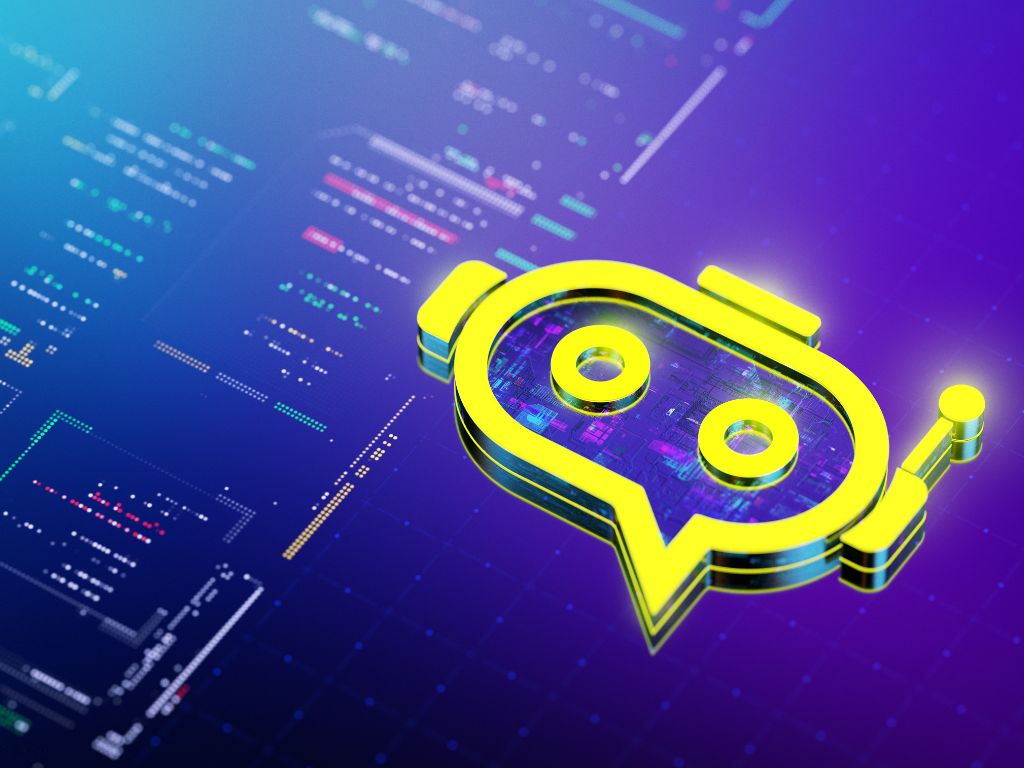
What Are Custom GPTs? The Core Concept
Imagine you have a brilliant, all-knowing assistant. That’s a bit like standard ChatGPT. But what if you need an assistant who’s not just brilliant, but also an expert in, say, your company’s marketing strategy, your unique customer service protocols, or even your specific coding framework?
This is where Custom GPTs step onto the stage. At their core, a Custom GPT is a specialized version of OpenAI’s large language models (like GPT-4) that you, the user, can configure and train for a very specific purpose. Think of it less like a generic Swiss Army knife and more like a precision-engineered tool designed for a single, critical job.
Instead of just responding to general queries, a Custom GPT is:
- Given specific instructions: You define its persona, its goals, its tone, and how it should behave in various scenarios. This acts as its core programming.
- Equipped with custom knowledge: You can upload documents, data, or link to external information sources, allowing it to draw on a proprietary knowledge base that standard GPTs don’t have access to. This makes it an expert in your domain.
- Empowered with actions: Crucially, you can enable it to perform tasks by integrating with external services, like sending emails, scheduling appointments, or querying databases. This transforms it from a chatbot into an active agent.
In essence, you’re transforming a powerful general-purpose AI into a highly focused, domain-specific expert that understands your unique context and can even act on it. It’s about moving from ‘AI for everything’ to ‘AI for your specific needs and challenges’.
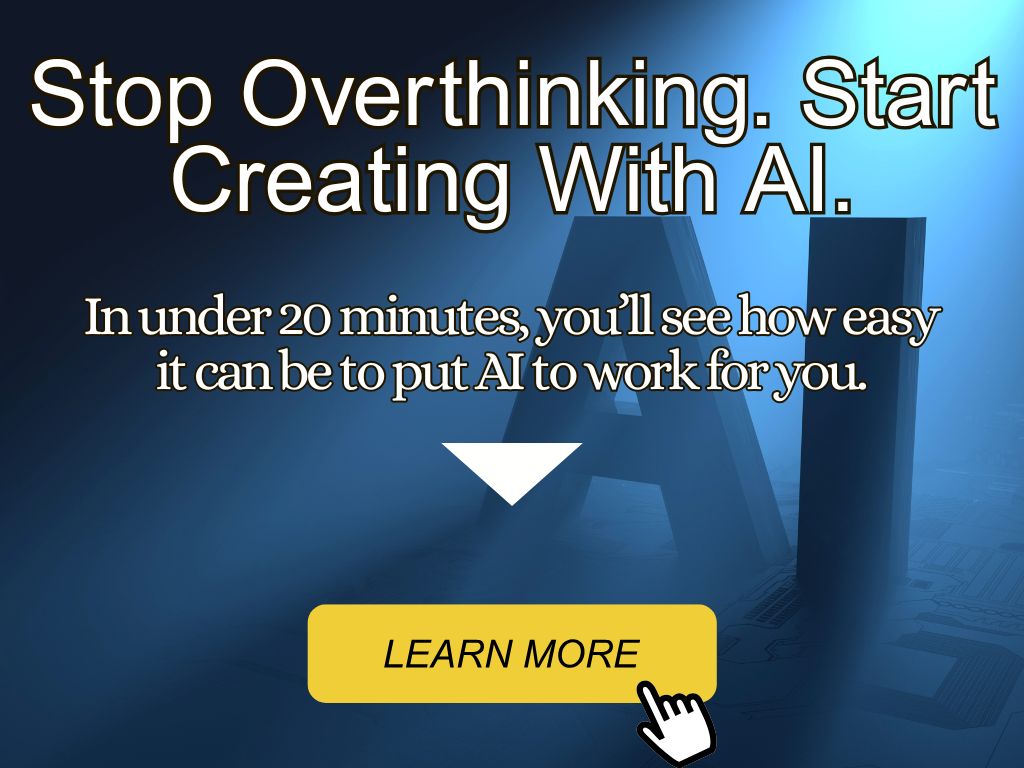
Beyond Generic: How Custom GPTs Enable Tailored AI Solutions
So, how does this specialized focus translate into tangible, game-changing benefits?
Imagine the difference between a general practitioner and a specialist surgeon. Both are highly skilled, but one has broad knowledge, while the other possesses deep, focused expertise in a very specific area. Generic ChatGPT is your brilliant GP. Custom GPTs are the specialist surgeons for your unique challenges.
This tailored approach enables:
- Unparalleled Precision and Relevance: A generic AI, no matter how powerful, can only provide general answers. A Custom GPT, however, is steeped in your specific data, your company’s history, your industry’s jargon, and your unique operational context. This means it doesn’t just respond; it responds with an understanding that feels almost human, delivering highly accurate and relevant outputs that are immediately actionable, significantly reducing the “hallucinations” or irrelevant information common with broader models.
- Turbocharged Efficiency and Productivity: By eliminating the need for extensive prompt engineering, constant clarification, or sifting through irrelevant data, Custom GPTs streamline workflows. They “know” what you need, how you need it, and often, how to act on it. This frees up human capital from repetitive, information-retrieval tasks, allowing your team to focus on strategic thinking, creativity, and complex problem-solving. From drafting highly specific internal reports to generating marketing copy that perfectly aligns with your brand voice, the time savings are immense.
- Consistent Quality and Brand Alignment: Maintaining a consistent brand voice, adherence to compliance standards, or ensuring uniform customer service responses can be challenging across a large team. A Custom GPT, programmed with your specific guidelines, tone, and knowledge base, ensures every interaction, every piece of content, and every automated action adheres to your exact standards. This is invaluable for brand integrity, regulatory compliance, and delivering a predictable, high-quality experience to your users or customers.
- Unlocking Niche and Proprietary Applications: Perhaps the most exciting aspect is the ability to create AI solutions for highly specific, previously unaddressable needs. Do you need an AI that can analyze complex proprietary financial documents, summarize internal legal contracts, or even act as a specialized coding assistant for a unique internal framework? A Custom GPT can be trained on these exclusive datasets and integrated with internal systems, transforming theoretical possibilities into practical, operational realities that give you a distinct competitive edge.
This shift from generic to tailored isn’t just about convenience; it’s about fundamentally transforming how businesses and individuals leverage AI, making it an indispensable, highly effective partner in their unique endeavors.

The Specific Benefits of Customizing AI for Your Needs
The true power of Custom GPTs emerges when we look at the concrete advantages they offer. Moving beyond the theoretical concept of tailored AI, these specialized models deliver tangible, game-changing benefits that can fundamentally transform operations and unlock new possibilities:
- Hyper-Personalization and Unmatched Accuracy: Forget generic responses. A Custom GPT, meticulously trained on your specific data, industry jargon, and unique operational context, delivers outputs that are not just relevant but deeply insightful and immediately actionable. This eliminates the need for extensive prompt engineering and significantly curtails “hallucinations” or irrelevant information, ensuring every interaction is precise, contextual, and directly addresses your unique needs.
- Turbocharged Efficiency and Productivity: By automating tasks that require deep domain knowledge or adherence to complex internal protocols, Custom GPTs act as force multipliers for your team. From drafting highly specific internal reports to generating marketing copy that perfectly aligns with your brand’s unique voice, they streamline workflows, reduce manual effort, and free up human capital for strategic thinking, creativity, and complex problem-solving, leading to immense time and cost savings.
- Consistent Quality and Brand Alignment: Maintaining a uniform brand voice, ensuring adherence to compliance standards, or delivering consistent customer service responses can be challenging across a diverse team. A Custom GPT, programmed with your exact guidelines, tone, and knowledge base, becomes an unwavering guardian of your standards. Every piece of content, every customer interaction, and every automated action adheres precisely to your brand identity and regulatory requirements, ensuring predictable, high-quality experiences.
- Unlocking Niche and Proprietary Applications: The most exciting frontier for Custom GPTs is their ability to address highly specific, previously unmanageable challenges. Imagine an AI that can analyze complex proprietary financial documents, summarize internal legal contracts, or even act as a specialized coding assistant for a unique internal framework. By training on exclusive datasets and integrating with internal systems, Custom GPTs transform theoretical possibilities into practical, operational realities, providing a distinct competitive edge that generic AI cannot replicate.
This strategic shift from a general-purpose AI to a deeply integrated, specialized partner is not just about convenience; it’s about fundamentally transforming how businesses and individuals leverage intelligence, making it an indispensable, highly effective engine for their unique endeavors.

Achieving Unprecedented Results: Real-World Applications
Moving beyond the theoretical concept of tailored AI, the true power of Custom GPTs emerges when we look at the concrete advantages they offer in real-world scenarios. These specialized models aren’t just convenient; they deliver tangible, game-changing benefits that can fundamentally transform operations and unlock new possibilities across diverse sectors:
- Hyper-Personalized Customer Support: Imagine an AI assistant dedicated solely to your product line. A Custom GPT, trained on your exhaustive product manuals, FAQs, troubleshooting guides, and even customer service transcripts, can provide instantaneous, accurate, and empathetic support. It understands your specific product jargon, knows common user pain points, and can even be programmed to initiate actions like checking order status or guiding users through complex setup processes. This leads to drastically reduced resolution times, higher customer satisfaction, and frees up human agents for more complex or sensitive issues.
- Brand-Consistent Marketing and Content Creation: For businesses, maintaining a consistent brand voice across all marketing channels is crucial yet challenging. A Custom GPT can be your dedicated Brand Voice Alchemist. Fed with your brand guidelines, style guides, past successful campaigns, and target audience personas, it can generate blog posts, social media updates, email copy, or even ad headlines that perfectly align with your unique tone, style, and messaging. This turbocharges content production while ensuring unwavering brand integrity and reducing the need for extensive editorial oversight.
- Internal Knowledge Navigator & HR Assistant: Employees often spend valuable time searching for company policies, benefits information, or specific project documentation spread across various systems. A Custom GPT, loaded with your internal wikis, HR handbooks, IT guides, and project archives, becomes an invaluable internal knowledge hub. Employees can simply ask natural language questions (“What’s the policy on remote work expenses?” or “How do I set up my VPN?”), and the GPT provides instant, accurate answers, often linking directly to the source document. This boosts employee productivity, reduces internal support tickets, and ensures consistent information dissemination across the organization.
- Specialized Developer Assistant: For software companies, a Custom GPT can be trained on your proprietary codebase, internal APIs, and specific coding standards. This allows it to act as a highly specialized coding assistant, capable of generating boilerplate code, suggesting refactors, explaining complex internal functions, or even identifying bugs based on your unique development environment. This accelerates development cycles, improves code quality, and significantly reduces the onboarding time for new engineers, allowing them to become productive faster within your specific tech stack.
- Data Analysis and Reporting Automation: Custom GPTs can be configured to process and summarize large volumes of proprietary data. Imagine an AI that can analyze complex financial reports, distill key insights from market research, or summarize legal documents tailored to specific clauses. By connecting to internal databases or ingesting custom datasets, these GPTs can generate highly specific reports, executive summaries, or even personalized insights, transforming raw data into actionable intelligence with unprecedented speed and precision.
These examples merely scratch the surface. From assisting legal teams with contract review to helping sales teams personalize outreach at scale, Custom GPTs are proving to be game-changers. They are not just tools; they are highly specialized, intelligent partners that amplify human capabilities, streamline operations, and unlock possibilities that were once out of reach for general-purpose AI.
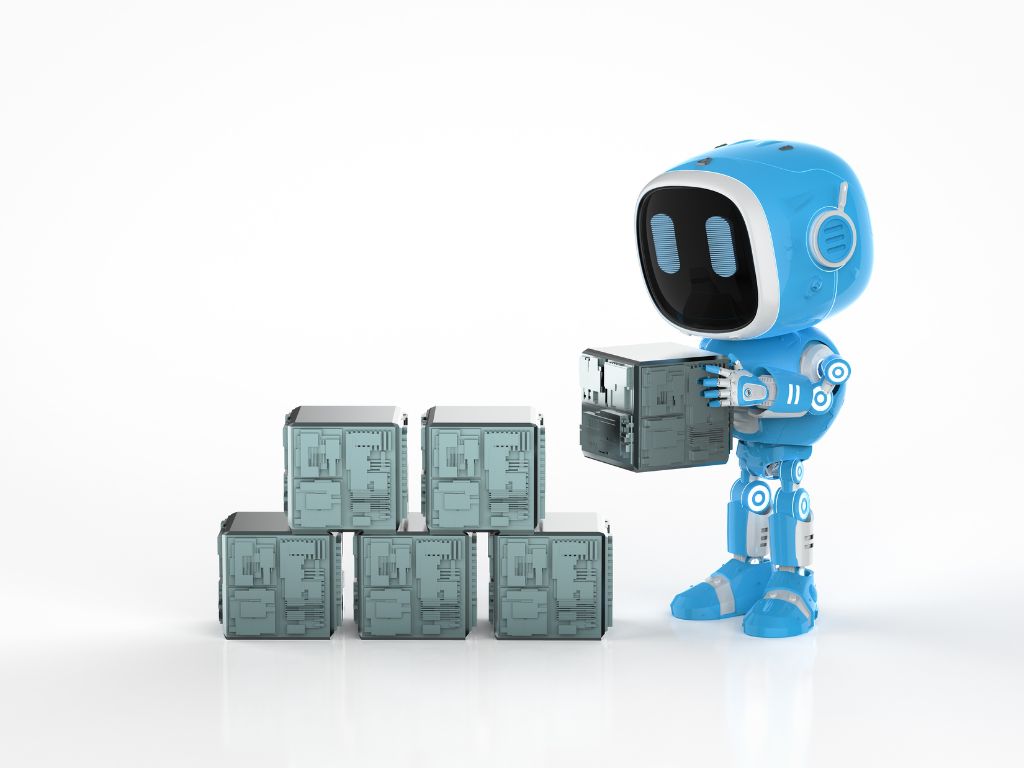
Building Your Own: A Step-by-Step Guide to Custom GPTs
Building your own Custom GPT might sound like a task reserved for developers, but OpenAI has made the process surprisingly intuitive and accessible. The magic isn’t in complex coding; it’s in clear communication and strategic configuration.
Here’s a step-by-step guide to transforming your vision into a specialized AI assistant:
- Access the GPT Builder:
- First, you’ll need a ChatGPT Plus or Enterprise subscription to create Custom GPTs.
- Navigate to the ChatGPT interface and look for “Explore GPTs” or “My GPTs” in the sidebar.
- Click the “Create a GPT” button to launch the builder interface.
- Converse with the Builder (The “Create” Tab):
- This is where the magic begins. The Custom GPT builder features an incredibly intuitive conversational interface. You don’t write code; you talk to it.
- Start by telling it, in plain language, what you want your GPT to do. For example: “I want a GPT that helps me draft social media posts for my organic skincare brand. It should sound friendly, informative, and always include relevant hashtags.”
- The builder will then ask clarifying questions to refine its understanding: “What kind of tone should it use?”, “Should it focus on specific product lines?”, “What are some common themes for your posts?”
- Based on your dialogue, it will suggest a name, a profile picture, and initial instructions. You can continue to refine these through conversation, essentially “training” it by describing its purpose and behavior.
- Refine & Configure (The “Configure” Tab):
- While the conversational builder is great for initial setup, the “Configure” tab gives you granular control over your GPT’s settings.
- Name & Description: Fine-tune these for clarity and discoverability.
- Instructions: This is the core “system prompt” – the detailed rules, persona, guardrails, and desired behaviors. You can manually edit or expand upon what the builder generated. Be precise here about its purpose, tone, what it should focus on, and what it should avoid.
- Conversation Starters: Add up to four pre-defined prompts that users can click to quickly engage with your GPT, guiding them on how to best utilize it.
- Knowledge: This is where you upload your proprietary data. Click “Upload files” to add documents, PDFs, CSVs, text files, or any other relevant information. This is what makes your GPT an expert in your domain. The quality and relevance of this data are paramount for accurate and contextual responses.
- Capabilities: Toggle on or off powerful built-in capabilities:
- Web Browsing: Allows your GPT to access real-time information from the internet.
- DALL-E 3: Enables your GPT to generate images based on prompts.
- Code Interpreter: Equips your GPT with the ability to perform complex calculations, analyze data, and run code.
- Actions (Advanced): This is the gateway to integrating your GPT with external services. By defining custom “actions” via an OpenAPI schema, you can empower your GPT to perform tasks like sending emails, scheduling appointments, querying databases, or interacting with your CRM. This transforms it from a sophisticated chatbot into an active agent within your workflows. While requiring some technical understanding, this feature unlocks truly transformative automation.
- Test and Iterate:
- Crucially, use the preview panel on the right side of the builder interface to test your GPT extensively.
- Pose a variety of questions and scenarios. Does it follow your instructions precisely? Does it leverage its custom knowledge effectively? Does it maintain the desired tone? Does it handle edge cases?
- If something isn’t right, go back to the “Create” or “Configure” tab, make adjustments, and test again. This iterative process of testing and refining is key to a high-performing Custom GPT. Think of it as sculpting – you refine until it’s perfect.
- Publish Your Custom GPT:
- Once you’re satisfied with your Custom GPT’s performance, click the “Save” or “Publish” button in the top right corner.
- You’ll be given options for visibility:
- Only Me: Keep it private for your personal use.
- Anyone with a link: Share it with specific individuals or teams.
- Public: Make it discoverable in the GPT Store (after review by OpenAI), allowing others to use your creation.
By following these steps, you can create a highly specialized AI assistant that’s perfectly aligned with your unique needs, ready to amplify your productivity and unlock new possibilities.
🛠️ Step-by-Step: Creating Your Own Custom GPT
| Step | What You Do | Why It Matters |
|---|---|---|
| 1. Define the Role | Decide your GPT’s purpose (e.g., support agent, content writer, sales assistant). | Clarity ensures outputs are on-brand and consistent. |
| 2. Set the Instructions | Write clear rules about tone, goals, and limits. | Prevents generic answers and keeps the GPT aligned with your intent. |
| 3. Add Knowledge | Upload documents, FAQs, or datasets it should reference. | Gives the GPT domain expertise beyond general knowledge. |
| 4. Customize Personality | Adjust tone (professional, casual, witty, etc.) to match your audience. | Builds trust and makes interactions feel authentic. |
| 5. Test & Refine | Run real prompts, spot weaknesses, and adjust. | Iteration sharpens performance and reduces errors. |
| 6. Integrate With Tools | Connect to CRMs, email, or other apps using Actions. | Turns the GPT from “chat-only” into a workflow powerhouse. |
| 7. Deploy & Monitor | Share with your team/customers, track results, and keep improving. | Ensures long-term reliability and ROI. |
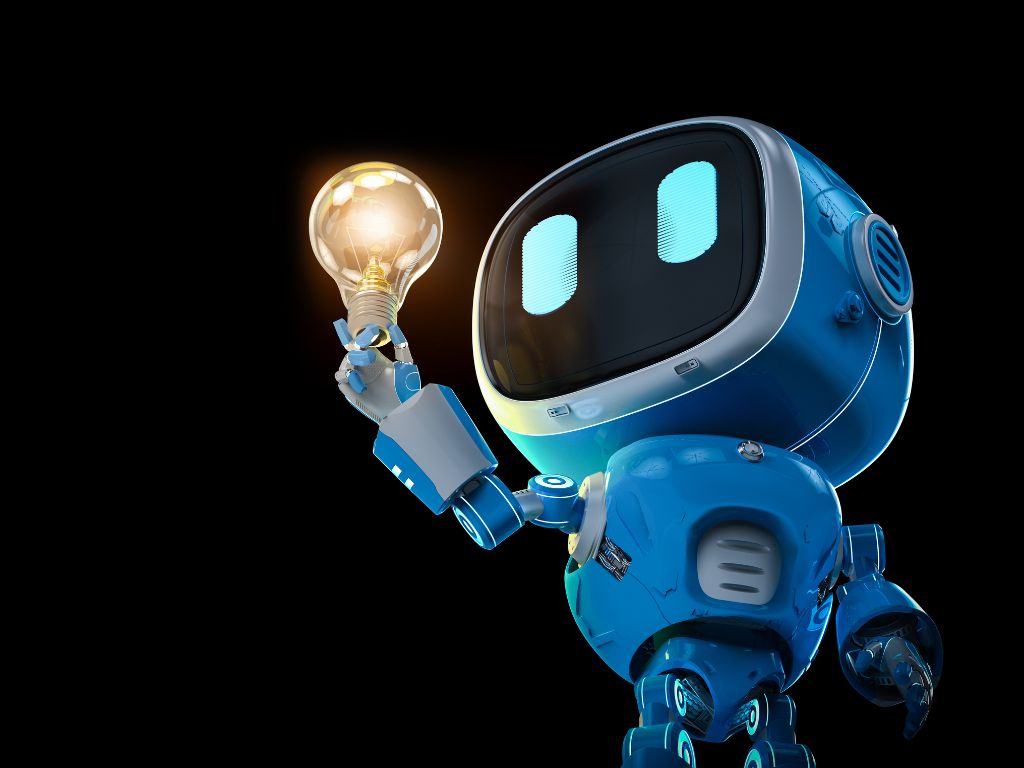
The Future of Business: Why Tailored AI is Indispensable
In an increasingly competitive landscape, relying solely on generic AI solutions is akin to using a blunt instrument when your challenges demand surgical precision. The future of business isn’t just about using AI; it’s about tailoring AI to become an intrinsic, intelligent extension of your unique operations, culture, and strategic goals. This isn’t merely an upgrade; it’s a fundamental shift that will define market leaders and laggards.
Here’s why tailored AI, epitomized by Custom GPTs, is rapidly becoming an indispensable cornerstone for any forward-thinking enterprise:
- The Ultimate Competitive Differentiator: Your proprietary data, your unique processes, and your specific customer interactions are your most valuable assets. Generic AI can’t fully leverage these. Custom GPTs, however, turn this exclusive knowledge into actionable intelligence, creating bespoke solutions that your competitors cannot easily replicate. This translates into unique products, unparalleled customer experiences, and operational efficiencies that carve out a distinct market advantage.
- Accelerated Innovation and Agility: The ability to rapidly prototype, deploy, and iterate AI solutions tailored to emerging business needs is critical. Custom GPTs enable organizations to build specialized AI agents in hours or days, not months. This agility fosters a culture of continuous innovation, allowing businesses to quickly adapt to market shifts, launch new services, and optimize internal processes with unprecedented speed.
- Unlocking Latent Value from Proprietary Data: Every business sits on a goldmine of untapped information – internal documents, customer feedback, operational logs, research data. Custom GPTs provide the key to unlock this value. By training these models on your exclusive datasets, you transform raw information into highly contextualized insights, automated reporting, and intelligent decision support that generic models simply can’t provide.
- Scalable Expertise, Not Just Automation: While automation handles repetitive tasks, tailored AI goes further by scaling expertise. Imagine every employee having access to an AI assistant trained specifically on their role’s nuances, company policies, and best practices. This doesn’t just save time; it elevates the capabilities of your entire workforce, allowing human talent to focus on creativity, strategy, and complex problem-solving, rather than information retrieval or basic task execution.
- Precision in a Noisy World: In an era of information overload, businesses need AI that cuts through the noise and delivers pinpoint accurate, contextually relevant outputs. Custom GPTs achieve this by operating within your defined parameters and knowledge base, significantly reducing “hallucinations” and ensuring every AI-generated response or action is precisely aligned with your objectives and brand integrity.
The businesses that thrive in the coming decade will be those that move beyond off-the-shelf AI and embrace the power of customization. Custom GPTs represent more than just a tool; they are a strategic imperative, empowering organizations to transform their unique challenges into unparalleled opportunities, making tailored AI not just a competitive edge, but a fundamental requirement for future success.
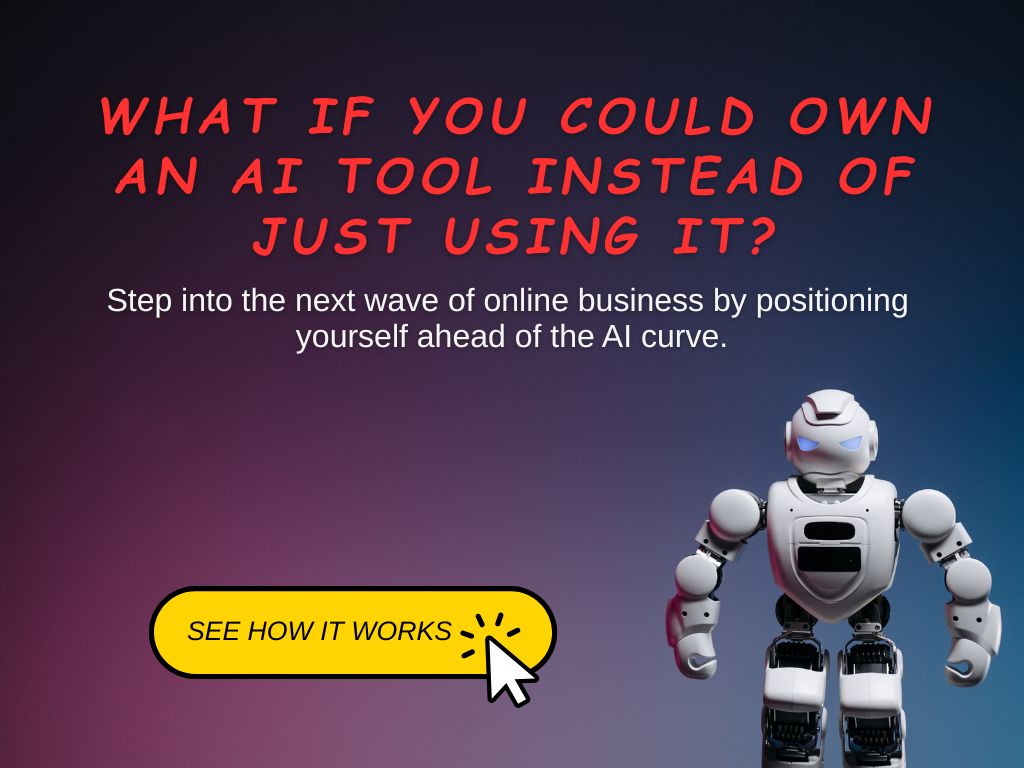
Common Mistakes to Avoid When Building Custom GPTs
While the process of creating a Custom GPT is remarkably intuitive, it’s easy to fall into common traps that can hinder its effectiveness. Avoiding these pitfalls will ensure your specialized AI assistant truly delivers on its promise.
Here are some common mistakes to watch out for:
- Vague or Conflicting Instructions: This is perhaps the most frequent pitfall. If your core instructions in the “Configure” tab are too general, ambiguous, or contradictory, your GPT will struggle to consistently deliver the desired output.
- Fix: Be incredibly precise. Define its persona, tone, goals, and specific behaviors. Clearly state what it should do and, just as importantly, what it should not do (e.g., “Never provide medical advice,” “Always cite sources from the knowledge base”). Think of it as writing a very detailed job description.
- Inadequate or Unstructured Knowledge Base: Simply uploading a pile of documents isn’t enough. If your knowledge files are incomplete, outdated, poorly formatted, or contain irrelevant information, the GPT will either “hallucinate” or provide unhelpful responses.
- Fix: Curate your knowledge base meticulously. Ensure the data is accurate, up-to-date, and well-organized. Consider breaking large documents into smaller, thematic chunks. The quality and relevance of your uploaded files directly correlate with your GPT’s expertise.
- Skipping Rigorous Testing and Iteration: Many users create a GPT and assume it’s perfect on the first try. Without extensive testing across a variety of scenarios, you won’t uncover its limitations, biases, or areas where it deviates from your expectations.
- Fix: Treat testing as an integral part of the development process. Use the preview pane to ask diverse questions, present edge cases, and intentionally try to “break” your GPT. Iterate frequently, adjusting instructions and knowledge based on your test results.
- Over-Scoping or “Jack-of-All-Trades” Syndrome: While tempting to create one super-GPT that does everything, this often dilutes its effectiveness. A GPT designed to be a “customer service agent, marketing copywriter, and internal HR assistant” will likely perform none of these roles exceptionally well.
- Fix: Embrace specialization. Focus your Custom GPT on a single, well-defined purpose. If you have multiple distinct needs, consider creating separate, highly specialized GPTs for each. This ensures precision and optimal performance for its intended task.
- Neglecting Guardrails and Safety Protocols: Without clear boundaries, your Custom GPT might generate inappropriate content, provide incorrect information, or engage in behaviors you didn’t intend.
- Fix: Explicitly include guardrails in your instructions. Define what topics are off-limits, what tone is unacceptable, and what kind of information it should never share (e.g., confidential data not in its knowledge base). Regularly review its outputs for alignment with your ethical and operational standards.
⚠️ Common Mistakes When Building Custom GPTs
| Mistake | Why It Hurts | Better Approach |
|---|---|---|
| Being too vague with instructions | Leads to generic or inconsistent outputs that miss your brand’s tone. | Be specific: set clear roles, voice, and guardrails. |
| Overloading the GPT with tasks | A “do everything” bot becomes confusing and less effective. | Focus on one primary use case or domain. |
| Neglecting updates | Outdated data or prompts reduce accuracy over time. | Refresh with new docs, FAQs, or rules regularly. |
| Ignoring user testing | Without feedback, blind spots remain hidden. | Test with real scenarios and refine based on results. |
| Skipping integrations | Limits the GPT to just chat, missing real workflow power. | Use Actions or APIs to connect with tools your business already uses. |
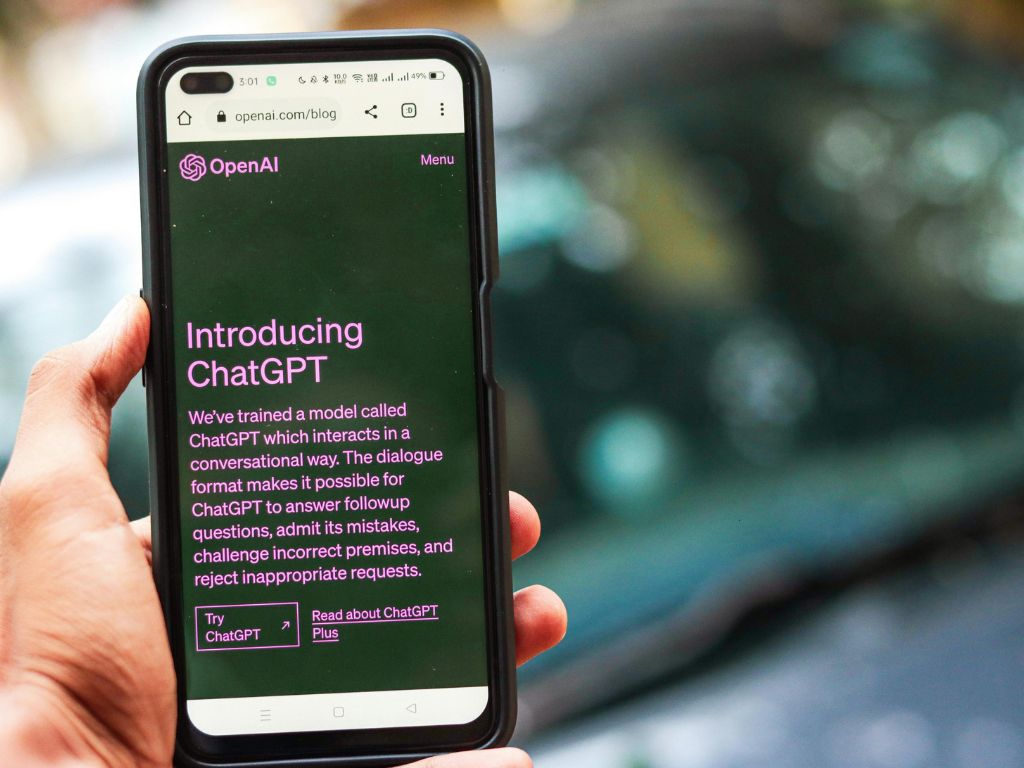
Custom GPTs VS Regular ChatGPT
Imagine standard ChatGPT as a brilliant generalist – an incredibly knowledgeable polymath capable of conversing on virtually any topic under the sun. It has absorbed a vast ocean of public internet data, making it an invaluable tool for brainstorming, general research, creative writing, and answering a myriad of broad queries. It’s your go-to for quick answers and exploring new ideas, relying on its extensive pre-trained knowledge to formulate responses.
However, its strength as a generalist can also be its limitation. When you need AI that understands the intricate nuances of your business, the specific jargon of your industry, or the proprietary data unique to your operations, regular ChatGPT often falls short. It lacks the deep, contextual understanding required for highly specialized tasks, and it certainly can’t directly interact with your internal systems or knowledge bases.
This is precisely where Custom GPTs diverge, transforming the generalist into a hyper-focused expert. Think of it this way:
- Regular ChatGPT: Is like a universally educated, highly intelligent person. You can ask them anything, and they’ll likely give you a good, general answer based on common knowledge.
- Custom GPT: Is like that same brilliant person, but now they’ve spent years immersed in your company’s specific documents, processes, and goals. They’ve been trained not just on general knowledge, but on your proprietary secrets, and they’ve been given a clear mandate on how to act and what tone to use within your specific context. They can even perform tasks for you using your internal tools.
Here’s a breakdown of the core distinctions:
- Knowledge Base:
- Regular ChatGPT: Relies on its massive, pre-trained dataset of public internet information, up to its last training cut-off. It has no access to your private files or real-time internal data.
- Custom GPT: In addition to its foundational GPT model, it’s explicitly equipped with custom knowledge you provide (uploaded documents, linked databases). This makes it an expert in your unique domain.
- Purpose & Scope:
- Regular ChatGPT: Designed for broad utility, general conversations, and common problem-solving. It’s a versatile tool for general information retrieval.
- Custom GPT: Built for a very specific purpose with clearly defined goals, persona, and behaviors. It excels at specialized tasks within a narrow, user-defined scope.
- Actions & Integrations:
- Regular ChatGPT: Primarily a conversational interface. It can’t directly perform external tasks like sending emails or querying databases.
- Custom GPT: Can be empowered with actions (via OpenAPI schemas) to interact with external services and perform real-world tasks, transforming it from a chatbot into an active agent.
- Configuration & Customization:
- Regular ChatGPT: Users interact with it directly via prompts, providing context and instructions with each query. Its core behavior is fixed.
- Custom GPT: Users configure its instructions, knowledge, and capabilities upfront, effectively “programming” its behavior and expertise. This significantly reduces the need for extensive prompt engineering in daily use.
- Output Precision & Relevance:
- Regular ChatGPT: Provides generally relevant answers, but may require extensive follow-up prompts to narrow down to specific needs, and can occasionally “hallucinate” or provide generic information.
- Custom GPT: Delivers unparalleled precision and relevance because it operates within a defined context and draws on specific, curated knowledge, leading to highly actionable and contextually accurate outputs.
In essence, while regular ChatGPT is a powerful general-purpose AI that responds to your prompts, a Custom GPT is an AI that you have proactively shaped, instructed, and equipped to become a specialized, intelligent partner for your unique challenges and workflows. It’s the difference between asking a highly intelligent friend for advice and hiring a dedicated, trained expert who knows your business inside and out.
Custom GPTs vs Regular ChatGPT
| Feature | Regular ChatGPT | Custom GPTs |
|---|---|---|
| Knowledge Base | Relies on pre-trained public internet data (up to cutoff date). Cannot access your private or proprietary files. | Equipped with your uploaded documents, data, and linked sources. Becomes an expert in your unique domain. |
| Purpose & Scope | Generalist tool for broad conversations, brainstorming, and common problem-solving. | Built for a specific role with clearly defined persona, tone, goals, and behaviors. Excels at narrow, specialized tasks. |
| Configuration | Fixed behavior. Requires detailed prompting each time to add context. | Fully customizable upfront: persona, tone, knowledge, conversation starters, guardrails. Context persists across sessions. |
| Actions & Integrations | Conversational only. Cannot directly perform external tasks. | Can integrate with external services via Actions (OpenAPI). Can send emails, query databases, schedule tasks, and more. |
| Output Precision | Provides generally relevant answers but may “hallucinate” or require back-and-forth prompting. | Delivers highly accurate, context-specific outputs that align with your brand voice, rules, and proprietary knowledge. |
| Use Case Fit | Best for quick answers, general research, creative writing, and broad exploration. | Best for domain-specific expertise: customer support, branded content creation, internal knowledge navigation, specialized coding, etc. |

Conclusion: Custom GPTs
We’ve journeyed from understanding the fundamental concept of Custom GPTs to exploring their tangible benefits and the straightforward process of creating them. What becomes abundantly clear is that these aren’t just another feature; they represent a pivotal evolution in how we interact with and leverage artificial intelligence.
By transforming a powerful generalist into a hyper-focused, domain-specific expert, Custom GPTs unlock unprecedented levels of precision, efficiency, and consistency. They allow you to infuse AI with your unique context, proprietary knowledge, and specific operational needs, making it an indispensable partner rather than just a tool.
The ability to sculpt AI to mirror your brand’s voice, navigate your internal data, automate niche tasks, and deliver hyper-personalized experiences isn’t just convenient – it’s a profound competitive differentiator. In a world awash with generic information, tailored AI cuts through the noise, providing insights and actions that are immediately relevant and impactful.
As we move forward, the question won’t be if you’re using AI, but how effectively you’re tailoring it to your unique challenges and opportunities. Custom GPTs empower businesses and individuals to move beyond off-the-shelf solutions, turning theoretical AI potential into practical, game-changing realities. Embrace this shift, and watch as your specific endeavors are amplified, streamlined, and propelled into a future of unprecedented results.

FAQs About Conclusion: Custom GPTs
Are Custom GPTs only for large enterprises?
No, absolutely not! While large organizations can certainly leverage them for complex internal systems and scale, Custom GPTs are incredibly versatile and accessible to everyone with a ChatGPT Plus or Enterprise subscription. Individuals, small businesses, and solopreneurs can create them for personal productivity, niche content creation, specialized research, or even just to automate specific tasks within their unique workflows. If you have a unique need or a specific dataset, a Custom GPT can be tailored to help, regardless of your scale.
Is technical expertise or coding required to build a Custom GPT?
Surprisingly, very little! OpenAI has designed the Custom GPT builder to be incredibly intuitive and user-friendly. You “train” and configure your GPT primarily through natural language conversations, defining its purpose, tone, and behaviors. While integrating “Actions” (connecting to external services) might involve some understanding of OpenAPI schemas, the core creation process is largely code-free, making it accessible to anyone who can clearly articulate their needs.
How secure is my proprietary data when used with a Custom GPT?
OpenAI states that data uploaded to Custom GPTs for knowledge (your files) is not used to train their broader models. Your conversations with your Custom GPT are also private by default within your account. However, it’s crucial to always exercise caution with highly sensitive or confidential information and to review OpenAI’s data privacy policies. For enterprise-level deployments, specific security and compliance features are often available through dedicated plans, offering enhanced controls.
What’s the key difference between a Custom GPT and simply giving detailed prompts to regular ChatGPT?
The core difference lies in persistence and specialization. With regular ChatGPT, you provide context and detailed instructions with every prompt. A Custom GPT, however, has its persona, core instructions, and custom knowledge baked in from the start. It remembers its purpose, desired tone, and unique knowledge base across all interactions, significantly reducing the need for repetitive prompt engineering and ensuring consistent, highly precise outputs tailored specifically to your domain. It’s a pre-configured, persistent expert designed for your specific needs.
Will Custom GPTs eventually replace human roles?
The prevailing view, strongly supported by current applications, is that Custom GPTs are powerful augmentation tools, not replacements. They excel at automating repetitive, information-retrieval, or data-processing tasks, freeing up human professionals to focus on higher-level strategic thinking, creativity, complex problem-solving, and empathetic interaction. Instead of replacing jobs, they transform roles, making individuals and teams significantly more productive and effective by offloading the mundane and amplifying human capabilities. They allow humans to do more, faster, and with greater precision.
How do I create a Custom GPT?
You can build one directly inside ChatGPT using the “Explore GPTs” section. No coding required just define your GPT’s instructions, upload files or data it should reference, and set its tone or persona. Developers can also extend functionality with Actions (via API integrations).
What are the best use cases for Custom GPTs?
They work best when you need a specialized assistant. Examples include customer support bots, branded content generators, internal knowledge navigators, sales assistants, or niche research tools. If a task is repetitive and domain-specific, a Custom GPT is usually a strong fit.
Can Custom GPTs integrate with business tools?
Yes. Through the Actions feature, you can connect a Custom GPT with CRMs, project management tools, databases, or even scheduling apps. This makes them more than just chatbots, they become workflow automators.
Leave a Reply